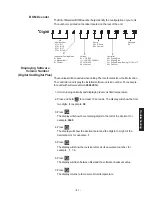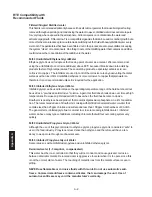
Appendix B
Appendix B NC Serial Communications Protocol
NOTE:
This appendix assumes you have a basic understanding of serial
communications protocols.
All data is sent and received in binary form, do not use ASCII. In the following
pages the binary data is represented in hexadecimal (hex) format.
The NC Serial Communications Protocol is based on a master-slave model.
The master is a host computer, while the slave is the bath's controller. Only
the master can initiate a communications transaction (half-duplex). The bath
ends the transaction by responding to the masters query. The protocol uses
either an RS-232 or RS-485 serial interface with the default parameters: 19200
baud, 1 start bit, 8 data bits, 1 stop bit, no parity, and for RS-485 a selectable
address from 1 to 100.
NOTE:
Before the unit will communicate, serial communication must be turned
on using the controller's Computer button.
The unit can be controlled through your computers serial port by using the
unit's standard female 9-pin connections.
RS-232
RS-485
1
No Connection
1-7
No Connection
2
TX
8
T+
3
RX
9
T-
4
No Connection
5
Signal Ground
6 - 9
No Connection
To connect the bath to your computer, a M/F 9 pin D-Subminiature extension
cable will be required. See page 31 for cables available from Thermo.
All commands must be entered in the exact format shown in the tables on the
following pages. The tables on the last page of this Appendix show all com-
mands available, their format and responses. Controller responses are either
the requested data or an error message. The controller response
must
be
received before the host sends the next command.
The host sends a command embedded in a single communications packet,
then waits for the controllers response. If the command is not understood or
the checksums do not agree, the controller responds with an error command.
Otherwise, the controller responds with the requested data. If the controller
fails to respond within 1 second, the host should re-send the command.
During RS-485 operation the bath will wait at least 5 milliseconds after receiv-
ing the checksum byte before asserting its transmitter for the purpose of
replying to the host. Therefore, when the host is done sending a command, it
must disable its transmitter in less than 5 milliseconds. When the bath is done
sending its reply, it will disable its transmitter in less than 5 milliseconds.
(Digital Plus Only)
9-pin
female
B -1







































